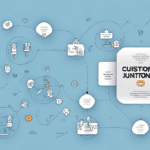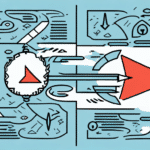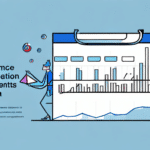Introduction to the Customer Retention Spectrum
Customer retention is a cornerstone of sustainable business growth. Retaining existing customers not only reduces the costs associated with acquiring new ones but also enhances customer lifetime value. Understanding the customer retention spectrum—from acquisition to reactivation—is essential for businesses aiming to optimize their retention strategies effectively. This article explores the various stages of the customer retention spectrum, highlights best practices, and provides actionable insights backed by data and reputable sources.
Understanding Customer Retention: Definitions and Importance
Customer retention refers to a company's ability to keep its customers over a specified period. Unlike customer acquisition, which focuses on attracting new customers, retention emphasizes maintaining and nurturing existing relationships. According to a Harvard Business Review study, increasing customer retention rates by just 5% can boost profits by 25% to 95%. This significant impact underscores the importance of prioritizing retention strategies.
The primary benefits of customer retention include:
- Cost Efficiency: Acquiring new customers can be up to five times more expensive than retaining existing ones.
- Increased Revenue: Loyal customers tend to spend more and exhibit higher lifetime value.
- Word-of-Mouth Referrals: Satisfied customers are more likely to recommend your business to others.
Stages of the Customer Retention Spectrum
1. Acquisition
The acquisition stage involves attracting potential customers through various marketing and advertising efforts. Effective strategies include:
- Content Marketing: Creating valuable content to establish authority and attract leads.
- Search Engine Optimization (SEO): Enhancing website visibility on search engines to drive organic traffic.
- Pay-Per-Click (PPC) Advertising: Utilizing targeted ads to reach specific demographics.
Tracking metrics such as website traffic, conversion rates, and customer acquisition cost is crucial for assessing the effectiveness of acquisition strategies.
2. Onboarding
Once a lead is converted into a customer, the onboarding stage begins. This phase focuses on:
- Personalized Welcome: Sending tailored welcome emails and providing dedicated support.
- Education: Offering training sessions or resources to help customers understand and utilize the product or service effectively.
- Feedback Collection: Gathering initial feedback to address any concerns and improve the experience.
3. Retention
The retention stage is about nurturing the relationship to ensure long-term loyalty. Key strategies include:
- Personalized Experiences: Using customer data to tailor recommendations and offers.
- Exceptional Customer Service: Providing timely and effective support to resolve issues.
- Continuous Engagement: Maintaining regular communication through newsletters, updates, and exclusive content.
4. Reactivation
The reactivation stage aims to win back lapsed customers. Effective reactivation techniques involve:
- Identifying Causes: Understanding why customers disengaged, such as dissatisfaction or better offers from competitors.
- Targeted Communication: Sending personalized messages and incentives to re-engage former customers.
- Offering Incentives: Providing discounts, exclusive offers, or new features to entice return.
Key Metrics for Measuring Customer Retention
Evaluating the success of retention strategies requires monitoring specific metrics:
- Customer Churn Rate: The percentage of customers who leave over a given period.
- Customer Lifetime Value (CLV): The total revenue a customer is expected to generate during their relationship with the business.
- Net Promoter Score (NPS): Measures the likelihood of customers recommending the business to others.
- Customer Satisfaction (CSAT):strong> Assesses how satisfied customers are with products or services through surveys.
- Customer Engagement: Tracks interactions such as website visits, email opens, and social media interactions.
These metrics should be analyzed collectively to gain comprehensive insights into retention performance and inform data-driven decisions.
Best Practices for Enhancing Customer Retention
Implementing effective retention strategies involves:
- Personalization: Tailoring experiences and communications based on customer data and preferences.
- Seamless Customer Journey: Ensuring consistency and ease across all touchpoints, from initial contact to post-purchase support.
- Exceptional Customer Service: Providing prompt, empathetic, and effective support to address customer needs.
- Leveraging Customer Feedback: Actively seeking and acting on feedback to improve products, services, and experiences.
- Loyalty Programs: Rewarding repeat customers with incentives, discounts, or exclusive access.
Case Studies of Successful Customer Retention Strategies
Examining real-world examples can provide valuable insights into effective retention practices:
Amazon Prime
Strategy: Amazon Prime offers members benefits like free shipping, exclusive content, and early access to deals.
Outcome: This program has significantly increased customer loyalty and lifetime value, with Prime members spending more annually than non-members. According to Amazon, Prime members contribute substantially to the company's recurring revenue.
Starbucks Rewards
Strategy: Starbucks' loyalty program rewards customers with points for purchases, which can be redeemed for free products and exclusive offers.
Outcome: The program has enhanced customer engagement and increased repeat purchases, contributing to Starbucks' strong market position.
Common Mistakes to Avoid in Customer Retention
Several pitfalls can undermine retention efforts:
- Ignoring Customer Feedback: Failing to listen and respond to customer concerns can lead to dissatisfaction and churn.
- Poor Communication: Inconsistent or irrelevant communication can disengage customers.
- Neglecting the Onboarding Process: An ineffective onboarding experience can set a negative tone for the customer relationship.
- Focusing Solely on Short-Term Goals: Prioritizing immediate gains over long-term relationships can harm retention efforts.
Future Trends in Customer Retention
The landscape of customer retention is evolving with technological advancements and changing consumer expectations. Anticipated trends include:
- Enhanced Personalization: Utilizing AI and machine learning to deliver more tailored experiences.
- Proactive Customer Service: Anticipating customer needs and addressing issues before they arise.
- Omnichannel Engagement: Providing a seamless experience across all customer touchpoints, including online, mobile, and in-store interactions.
- Subscription-Based Models: Increasing adoption of subscription services to ensure recurring revenue and sustained customer relationships.
Conclusion: The Crucial Role of the Customer Retention Spectrum
Mastering the customer retention spectrum is vital for businesses seeking long-term success. By comprehensively understanding each stage—from acquisition to reactivation—and implementing best practices backed by data and real-world examples, companies can foster enduring customer relationships. Emphasizing retention not only boosts profitability but also cultivates a loyal customer base that advocates for the brand, driving sustained growth in an increasingly competitive marketplace.






















